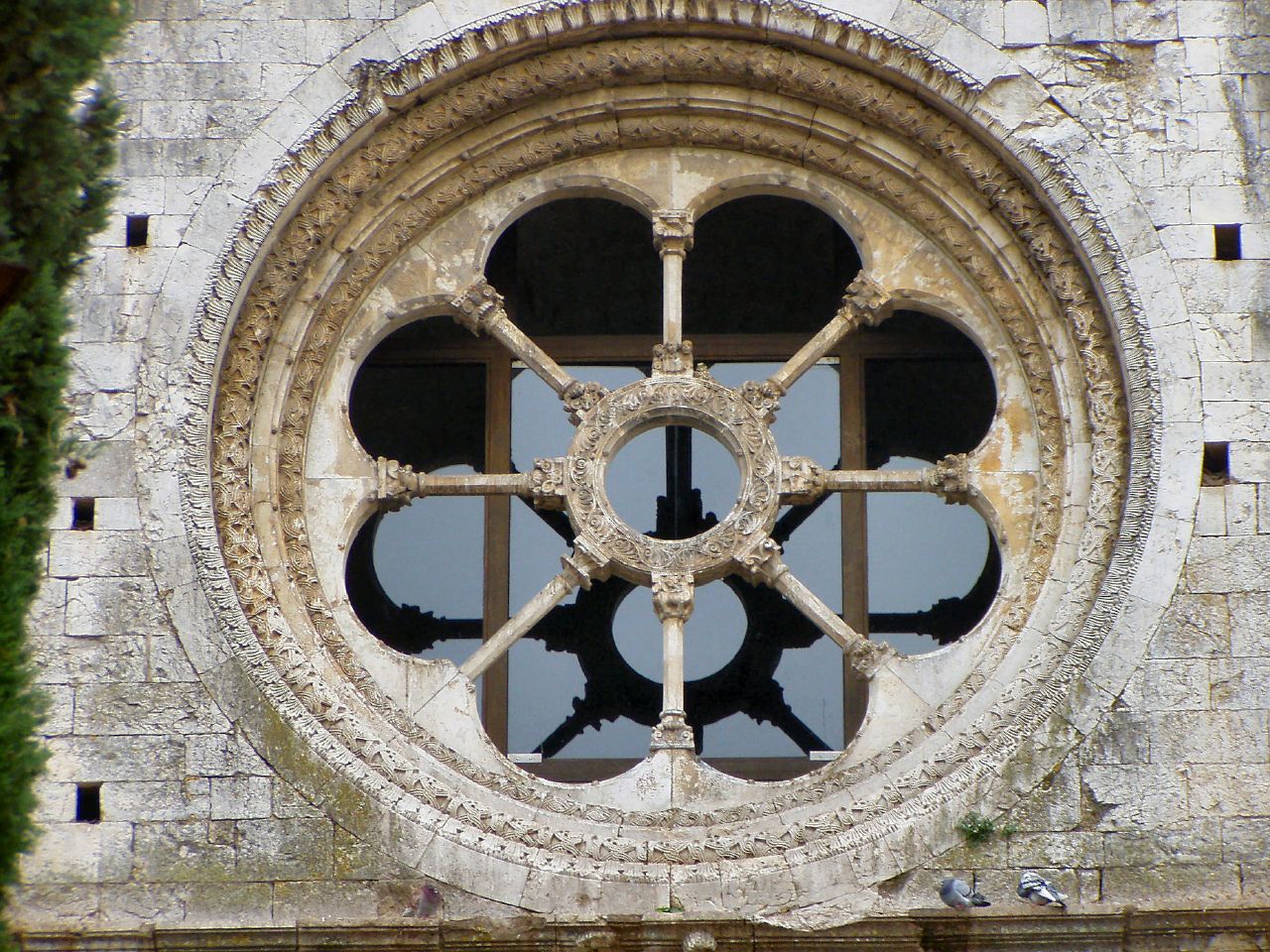#2594. Medieval Facade with Circular Rose Window: An Example of Exquisite Stone Carving
The image showcases a magnificent circular rose window, characteristic of medieval architecture, likely belonging to the Romanesque or early Gothic style. The window is set into a stone wall made of light-colored limestone or sandstone, meticulously assembled from carefully processed blocks.
The circular window features a complex structure with a radial pattern. At its center lies a small circle from which six stone rays extend, forming six segments. The entire stone framework is richly decorated with carvings, particularly noticeable on the outer and inner borders. The window opening is framed by several concentric arches with fine ornamental carving, creating depth and texture.
The building's facade displays characteristic signs of ancient stonework with visible traces of time — worn surfaces, uneven coloration, and minor deteriorations, which give the structure an authentic historical appearance. On the left, vegetation is partially visible, and at the bottom of the frame, a pair of pigeons can be noticed, emphasizing the scale and urban context of this architectural element.
Such rose windows were not only decorative elements but also functional solutions for illuminating the interior spaces of temples or large secular buildings, becoming a signature feature of the structure and demonstrating the craftsmanship of stonemasons of their time.
